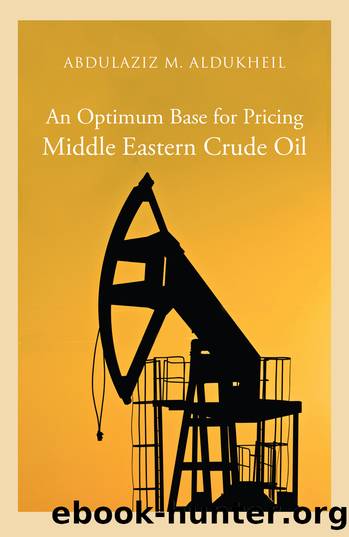An Optimum Base for Pricing Middle Eastern Crude Oil by Abdulaziz Aldukheil

Author:Abdulaziz Aldukheil
Language: eng
Format: epub
ISBN: 9780863565793
Publisher: Saqi
Published: 2020-01-30T00:00:00+00:00
In the pre-expensing model, royalty is credited against profit for the determination of the profit to be shared. In the new formula, royalty is added to the total cost of production, just like any other factor cost. Thus, instead of charging the full amount of royalty payment to the governments, 50 per cent share, the new formula (i.e., expressing royalty) charged only half. For example, if total return per barrel (γt) is $10; total cost (Ct) – excluding royalty – per barrel is $4; and royalty per barrel (Yt) is $1, then government take per barrel (Gt) using the original formula equals:
Gt = 1/2 (γt – Ct) – Yt
= 1/2 (10 – 4) – 1
= $2
with the new formula, it equals;
Gt = 1/2 (γt – Ct – Yt)
= 1/2 (10 – 4)
= 2.5
After two years of negotiations (1962–64) the major oil companies accepted the principle of expensing royalty, but the acceptance was conditioned by the governments’ acceptance of a discount on posted prices. Such discount allowances partially offset government gain from expensing royalty. The oil-producing countries were unsuccessful in their demand that the level of royalty be raised.
Table 3.4 Phase-Out Process of the Discount Allowance
Year % Allowance Off Posted Price (1) Gravity Allowance (cents/barrel) (2)
1964 8.5
1965 7.5 0.132350
1966 6.5 0.264700
1967 6.5 0.264700
1968 5.5 0.324259
1969 4.5 0.383818
1970 3.5 0.443377
1971 2.0 0.502936
1972 – 0.562495
1973 – 0.374997
1974 – 0.187499
1974 – –
Source: OPEC
In 1966, OPEC members renewed their negotiations with the oil companies, demanding the total and immediate elimination of discounts from posted prices. In January 1968, after lengthy negotiations, some OPEC members accepted a modified version of the companies’ proposal. The agreement provides a phase-out of the discount allowance over a period of seven years. Table 3.4 shows the phase out process of the discount allowance.
Column (1) of Table 3.4 shows the percentage allowance off posted prices for heavy crude of 27° API and below. For light crude of 27° API and above (all crudes above 40° are considered as of 40° API), column (2) provides a gravity allowance, expressed in terms of cents per barrel for each full degree of API gravity.
Posted Prices: Upward Revision
The use of posted prices as a reference for calculating government oil revenue is of vital concern to oil-producing countries. Because oil revenue is the main source of government receipts in these countries, a reduction in posted prices implies an immediate and severe decline in government total revenue.
Table 3.5 Crude Oil Production in Major Middle Eastern Countries, 1955–62 (Thousands of Barrels per Day)
Download
This site does not store any files on its server. We only index and link to content provided by other sites. Please contact the content providers to delete copyright contents if any and email us, we'll remove relevant links or contents immediately.
The Prize: The Epic Quest for Oil, Money & Power by Daniel Yergin(803)
The Prize by Yergin Daniel(642)
Oil: A Beginner's Guide (Beginner's Guides) by Vaclav Smil(536)
The Quest: Energy, Security, and the Remaking of the Modern World by Yergin Daniel(536)
The Boom: How Fracking Ignited the American Energy Revolution and Changed the World by Russell Gold(522)
Energy: A Human History by Richard Rhodes(502)
The Real Cost of Fracking by Michelle Bamberger Robert Oswald(481)
The Fracking Truth by Chris Faulkner(455)
A Hole at the Bottom of the Sea by Joel Achenbach(452)
Plasma Astrophysics, Part I by Boris V. Somov(426)
Power Trip by Webber Michael E.;(405)
The Snowy by Siobhán McHugh(398)
What We Need to Do Now by Chris Goodall(394)
Burn Out: The Endgame for Fossil Fuels by Dieter Helm(390)
Hedge Hogs by Barbara T. Dreyfuss(386)
Fuel on the Fire by Greg Muttitt(379)
Fuel on the Fire: Oil and Politics in Occupied Iraq by Greg Muttitt(374)
Fueling Freedom by Stephen Moore(365)
Quantitative Energy Finance by Fred Espen Benth Valery A. Kholodnyi & Peter Laurence(364)
